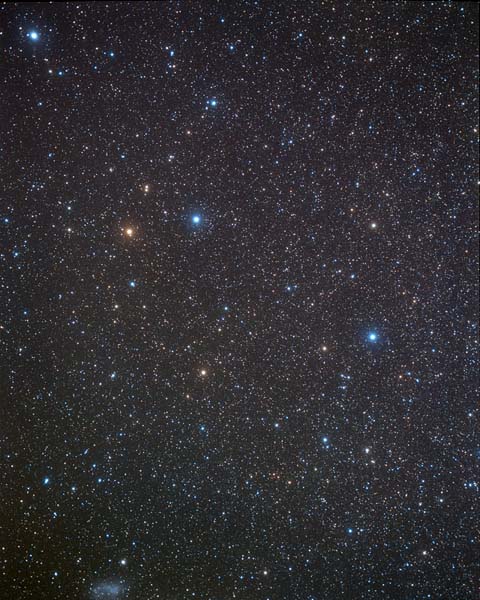DMI image reference Gru. « Previous || Next » Constellations A » H || Constellations I » V

Roll mouse over picture to see constellation figures and outlines
Image and text ©2008 Akira Fujii/David Malin Images.
In the picture above, north is at the top and the image covers 42.6 x 53.2 degrees. Approximate image centre is 21:44:27.1, -53:30:24 (H:M:S, D:M:S, J2000) Astrometric data from Astrometry.net.
Best seen in the early evening in September-October
Indus (the Indian, widely taken to mean the American Indian) is a constellation deviod of bright stars in a mostly undistinguished part of the southern sky. It was created by Johann Bayer and appeared in his atlas of 1603. The reference to the American Indian comes from the constellation engraving by Bayer, which shows a figure carrying arrows; However, even if it was conspicuous, most of the constellation is invisible from the USA.
Information about Grus and Tucana appears on the appropriate pages, and there are no named stars in Indus.
Constellations adjoining Indus:
Grus, Microscopium, Octans, Pavo, Telescopium, Tucana